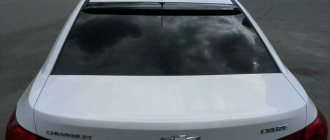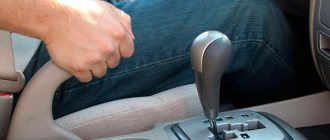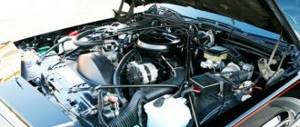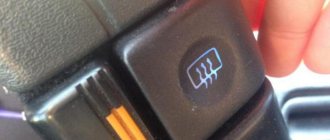Fogging up car windows significantly impairs visibility. As a result, the driver may lose control over the situation on the road, and the car in this condition may cause an accident.
It is quite possible to cope with the problem using time-tested methods. We will tell you in this article how to remove fogged windows in a car and prevent its further occurrence.
Causes of condensation
Windows that are wet from the inside mean that while the vehicle is moving, the driver must often be distracted to wipe the glass. This is not only inconvenient, but also unsafe.
Fogging can be caused by one of the following reasons:
Significant difference between air temperatures outside and inside the car. This is typical for the cold season or during a sudden cold snap.- Rain or snow. Precipitation on the street significantly contributes to the increase in humidity in the car itself.
- The car just came out of the car wash. If after treatment the interior has not been properly dried, condensation will appear on the glass.
- Radiator malfunction. Status check and troubleshooting required.
- Air conditioning malfunction. For example, filter contamination.
- Irregularities in the operation of the split system or, alternatively, the need to configure it correctly.
In addition to obvious reasons, increased humidity in the cabin is caused by passengers in the car being intoxicated. The alcohol vapor they exhale settles on surfaces, forming condensation.
Causes of condensation in headlights
During the use of a vehicle, problems may arise not only with the bulbs in the car headlights burning out, but also the need for a complete replacement of the entire optics of the car. During the entire period of use, the owner could simply not notice that the headlights of his car were sweating and a certain amount of condensation formed in them. What could be causing this type of problem? Carrying out car washing. If the appearance of liquid in car headlights was noted just after the car was in a car wash, then this indicates a low degree of sealing of the headlights. The presence of a small crack or opening allows moist air to enter the interior of the headlight. To prevent this, after washing, be sure to open the hood and let the car stand in this position for about 20 minutes. Most often, this time will be enough for the liquid that has got inside the headlight to evaporate. Such a nuisance will no longer bother the driver until the next car wash becomes necessary.
Frequent formation of condensation. If condensation in car headlights forms on a regular basis, then this is a cause for concern because increased humidity levels can cause big problems in the near future. At first, the road illumination will be worse, and then malfunctions will occur in all optical devices. This means that the car owner will have to prepare for significant costs for repair work. Due to the frequent formation of condensation, a short circuit can easily occur, which will lead to the failure of the entire electrical system in the car. In such conditions, the driver will be forced not only to replace lamps, but also to repair all electronics.
In some cases, when liquid remains in the inside of the headlights for a long time, their metal components become unusable. This causes corrosion to occur, gradually spreading throughout the entire body of the machine. At the same time, the destruction of light bulbs occurs. As a result, every part that shows signs of rust will need to be replaced, and this is a significant blow to the family budget. That is why it is necessary to determine in time the cause of condensation in the headlights.
The main causes of condensation. The most common causes of liquid appearing in the inside of car headlights are:
- The headlight ventilation system is clogged, as a result of which the water that gets inside is unable to evaporate;
- Violation of the tightness of car headlights;
- The appearance of cracks in the headlight glasses, for which there are a considerable number of reasons;
- The sealing of the wiring located inside the headlights is broken;
- The presence of chips in the design of the headlight itself.
In addition to all of the above, there are a large number of different reasons why condensation may appear inside the headlights. Often, under certain conditions, this can have a negative impact on the general condition of lighting equipment.
In addition, incorrectly purchasing headlights for your car, from an unknown and unverified manufacturer, can also create this kind of problem. That is why, according to the recommendations of experts, you should install only the option that is considered as a standard for the model you drive.
Bottom line. One of the driver’s main tasks is to monitor the technical condition of the car, including the headlights. If condensation occurs from time to time, this is still acceptable, but if it happens on an ongoing basis, this becomes a reason to find out the cause and take action.
- Winter season 2020: Viatti, studs, tread
See all photo news >>
How to fix the problem?
To fix the problem with foggy windows, you can use several methods. The main ones include:
- Placement of moisture absorbers in the cabin.
- Setting the air conditioning system so that warm air is supplied to the windows.
- Using special products to treat glass that prevent moisture from settling.
- Ventilation and drying of the interior itself.
- Lowering the windows so that a small gap is formed, allowing air to circulate.
In addition to the above measures, you must remember about the regular maintenance that the car must undergo. Timely prevention will prevent future problems with air humidity in the cabin.
in winter
During the cold season, the formation of condensation can make it difficult to drive in difficult conditions. In addition, at low temperatures, even ice can form when condensate freezes.
Ways to fix the problem:
- organize electric heating of panels;
- use special anti-condensation products;
- organize good heating of the interior; if it is excessive, you can open the window a little.
In the rain
When it rains, moisture penetrates into the car interior and settles in the form of steam on the surfaces inside the cabin. This is most noticeable on windows, which fog up very quickly.
You can solve the problem using the following methods:
- When driving, you can open the windows on both sides. This ensures good air flow and condensation will be eliminated.
- When boarding a cabin during snowfall or rain, it is advisable to shake off moisture from clothes and shoes, and pack umbrellas and raincoats in waterproof cases or bags.
- Keeping your car in a heated garage after rain. In this case, windows or doors should be slightly open.
- In humid weather, you can warm up the seats with a hairdryer to remove moisture.
Five reasons why car windows sweat
The most common reasons why car windows sweat are:
- In winter, glass sweats due to the formation of condensation when warm indoor and cold outdoor air interact. Condensation settles on the glass surface, causing the windows to fog up.
- Also, windows can sweat during rain due to excess moisture - wet clothes, rugs and car seats cause windows to fog up. The stove operating in the cabin dries things, and at this time moisture settles on the car windows.
- Malfunctions or contamination in the cabin filter also lead to the fact that it does not absorb moisture and dust well, and as a result, the windows in the car sweat.
- Fogging of windows is also caused by a breakdown of the valve that ensures clean air enters the cabin (or a breakdown of the sensor that regulates the operation of the valve flaps).
- The presence of drunken passengers in the car can also very often be the reason why the windows sweat. This occurs due to the ability of alcohol vapor to absorb moisture.
After we have figured out the reasons why car windows most often sweat, it will be easier for you to understand what to do about it and how to avoid them fogging up.
How to prevent it?
There are various ways to deal with fogged glass. You can even use simple folk recipes or special auto chemicals for glass treatment, which can be purchased at a store that sells related products for motorists.
Pasting glass with special anti-fog films based on polymers is one of the effective methods. This film prevents water particles from lingering on the surface.
When installing the coating, condensation does not form on the glass, and water droplets flow down. Gluing the film is not very difficult .
Folk remedies allow you to treat glass in such a way that condensation does not form on it and visibility does not deteriorate.
All methods are quite simple and do not require large financial investments:
Rubbing glass with half a fresh lemon.- Placing canvas bags with salt (or cat litter) in the cabin, including on the dashboard.
- Apply and thoroughly rub shaving cream into the glass.
- Treat the glass with bar soap. To do this, you first need to apply random strokes, and then carefully rub the surface.
- Treat the glass with a mixture of alcohol (20 tsp) and glycerin (1 tsp).
- Rubbing with mastic.
If you are planning a long trip, it is recommended to use glycerin or mastic. They give a long lasting effect.
Reasons for fogging car windows
Of course, the most obvious reason lies in condensation. When the air temperature differs greatly from the temperature inside the car, water droplets form and settle on the surface of the glass. They are covered in perspiration. Visibility may also be impaired by:
- Increased humidity in the car interior. When people get into the car with wet clothes and turn on the heater in rainy weather, this leads to rapid evaporation of moisture, which settles on the surface of the windshield and side windows.
- Clogged cabin filter. If this device stops absorbing moisture and dust in the required volume, then condensation will also form on the glass.
- Faulty clean air supply valve. If the sensor flaps stop functioning normally, the air circulation in the car interior is disrupted.
Also, the problem may lie in the system that is responsible for some kind of drainage in the car. If the holes for removing excess water are clogged with leaves and dirt, this often provokes the appearance of perspiration on the glass.
As a rule, solving technical problems in a car helps to get rid of fogging of car windows. But sometimes the car owner simply does not have time to carry out diagnostics, or the reasons for the appearance of perspiration are related to other factors. In this case, you must follow the recommendations that will help solve the problem.










